Your 1-year-old is a whirlwind of energy and exploration. This is a pivotal time for brain development, and everyday experiences become opportunities for learning. Here, we delve into engaging activities that nurture their natural curiosity and support their growth.
Fun And Educational Activities For 1 Year Olds
Keeping your curious 1-year-old entertained and learning doesn’t require expensive toys or fancy outings. With a little creativity and everyday household items, you can create a world of wonder and exploration.
Here are 20 Montessori-inspired activities to spark your child’s development:
Activity 1: Textured Basket
Age Group: 6 months – 1 year old
Materials: Basket, fabric scraps (different textures)
How to Perform: Fill a basket with fabric scraps in various textures, like felt, fleece, and satin. Let your child reach into the basket and explore the different feels. This sensory activity introduces them to texture exploration and strengthens their sense of touch.
Area of Development: Sensory development, Tactile discrimination
Activity 2: Shaking Surprise
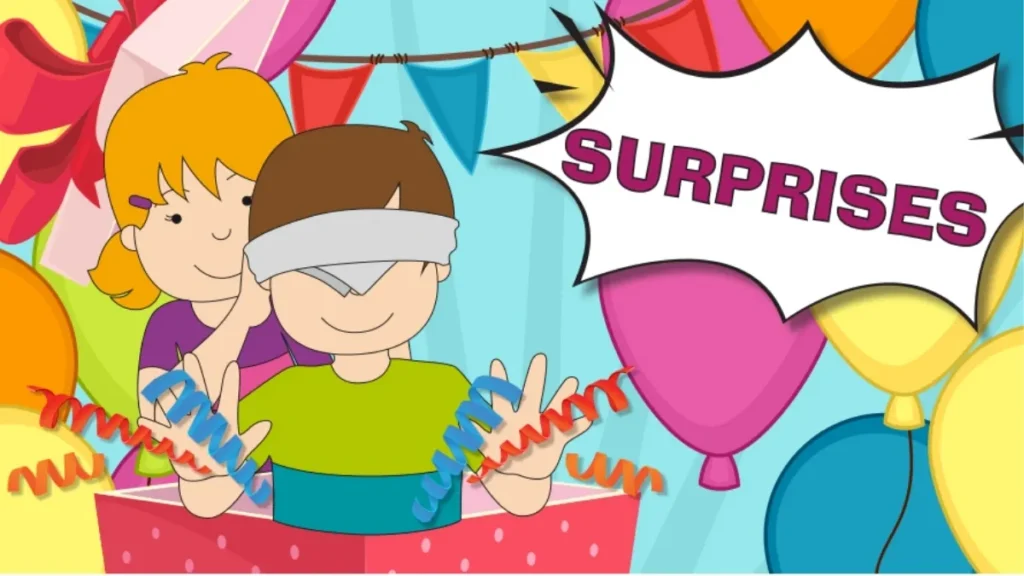
Age Group: 6 months – 1 year old
Materials: Small container (plastic bottle, canister), dry beans/pasta, objects that make noise (bells, buttons)
How to Perform: Fill a small container halfway with dry beans or pasta. Add a few small objects that make noise, like bells or buttons. Secure the lid tightly. Let your child shake the container and listen to the rattles and shakes. This activity strengthens auditory processing and hand-eye coordination.
Area of Development: Auditory processing, Hand-eye coordination
Activity 3: Crinkle Paper Fun
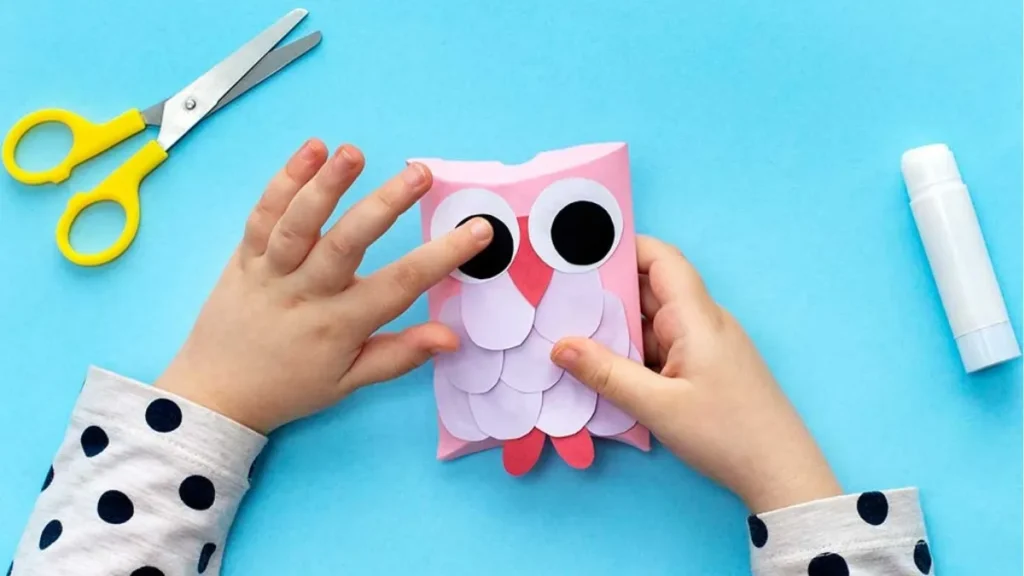
Age Group: 6 months – 1 year old
Materials: Tissue paper (various colors)
How to Perform: Crumple up colorful tissue paper into balls. Show your child how to crinkle the paper in their hands and make noise. Let them loose with the crinkly paper for a fun sensory activity. This helps develop hand-eye coordination and fine motor skills.
Activity 4: Reaching and Grasping
Age Group: 6 months – 1 year old
Materials: Safe household objects (rattles, spoons, blocks)
How to Perform: Place a variety of safe household objects within your child’s reach, like rattles, spoons, or blocks. Encourage them to reach for and grasp the objects. This simple activity strengthens hand-eye coordination and fine motor skills.
Area of Development: Hand-eye coordination, Fine motor skills
Activity 5: Mirror Play

Age Group: 6 months – 1 year old
Materials: Unbreakable mirror (secured to wall or on floor)
How to Perform: Secure an unbreakable mirror at your child’s eye level, either on the wall or on the floor. Watch with delight as they discover their reflection. They may touch the mirror, reach out to their reflection, or giggle at the sight. Mirror play helps develop self-awareness and social skills.
Area of Development: Self-awareness, Social skills
Activity 6: Big Book Look
Age Group: 6 months – 1 year old
Materials: Large, colorful children’s book
How to Perform: Choose a big, colorful children’s book with captivating pictures. Sit with your child and turn the pages together, pointing out objects and making sound effects. This activity fosters a love for books and introduces basic language development.
Area of Development: Language development, Literacy skills
Activity 7: Tummy Time with Textures
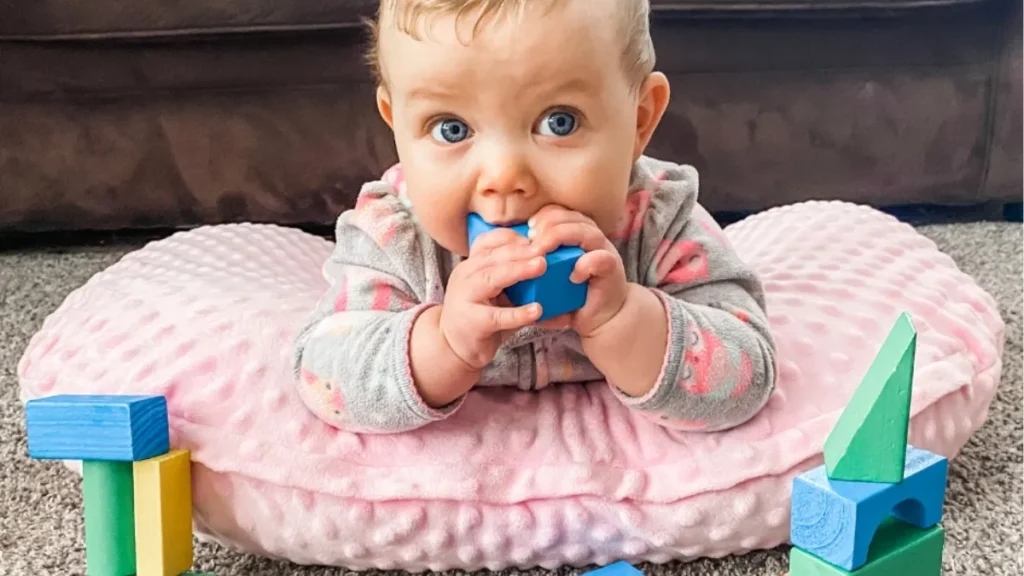
Age Group: 6 months – 1 year old
Materials: Play mat, blanket (textured fabric)
How to Perform: Place your baby on their tummy on a comfortable play mat. Drape a textured blanket or fabric over their back, leaving their head uncovered. This tummy time variation strengthens neck and back muscles while introducing a new sensory experience.
Area of Development: Gross motor skills, Sensory development
Activity 8: Shaking Teethers
Age Group: 6 months – 1 year old
Materials: Teethers (various textures), ribbon
How to Perform: Tie a ribbon through two or three teethers with different textures. Let your child hold the ribbon and shake the teethers together. This activity strengthens grasping skills and hand-eye coordination, while the different textures soothe teething gums.
Area of Development: Grasping skills, Hand-eye coordination
Activity 9: Cause and Effect Play
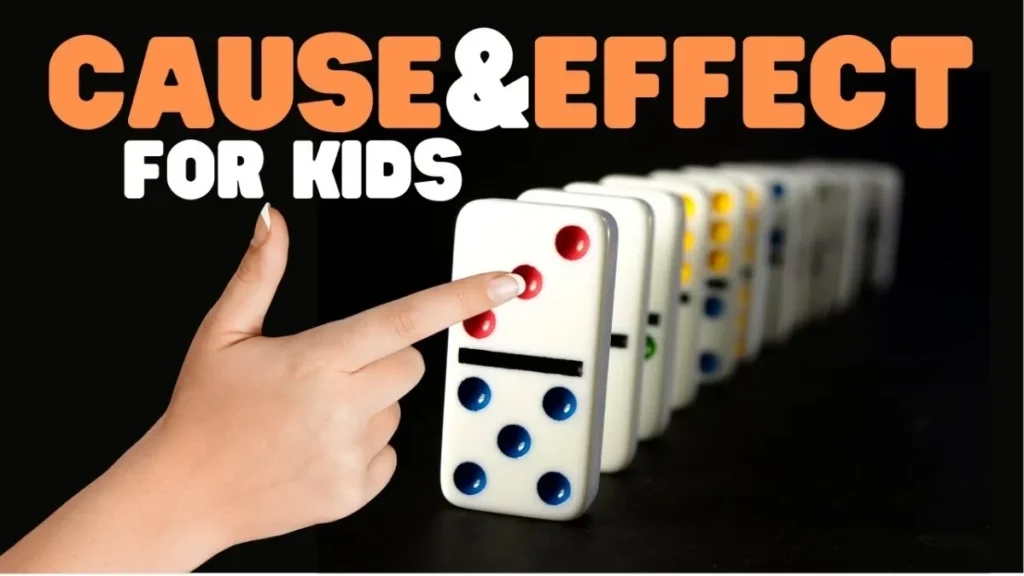
Age Group: 9 months – 1 year old
Materials: Empty container with lid, spoon
How to Perform: Find an empty container with a lid that your child can easily open and close. Show them how to put the lid on and take it off. You can also demonstrate putting objects like a spoon in and out of the container. This activity introduces basic cause and effect and strengthens hand-eye coordination.
Area of Development: Cause and effect, Hand-eye coordination
Activity 10: Textured Transfer
Age Group: 9 months – 1 year old
Materials: Two bowls or containers, crinkled tissue paper (other textures optional)
How to Perform: Fill one bowl with crinkled tissue paper (or other textured materials like ribbons or pom poms). Provide your child with two bowls and show them how to transfer the pieces of tissue paper from one bowl to the other. This simple activity strengthens fine motor skills and hand-eye coordination.
Area of Development: Fine motor skills, Hand-eye coordination
Activity 11: Stacking Cups
Age Group: 9 months – 1 year old
Materials: Set of nesting or stacking cups
How to Perform: Provide your child with a set of nesting or stacking cups. Demonstrate how the cups fit inside each other, then let them explore stacking and unstacking them on their own. Stacking toys help develop hand-eye coordination and problem-solving skills.
Area of Development: Hand-eye coordination, Problem-solving skills
Activity 12: Singing and Dancing

Age Group: 6 months – 1 year old
Materials: Music player (optional)
How to Perform: Put on some music (or sing along!) and bounce or sway with your child. You can also clap your hands and tap your feet together. Singing and dancing are fun ways to bond with your child and introduce them to rhythm and movement.
Area of Development: Social bonding, Music appreciation, Gross motor skills
Activity 13: Peek-A-Boo Play
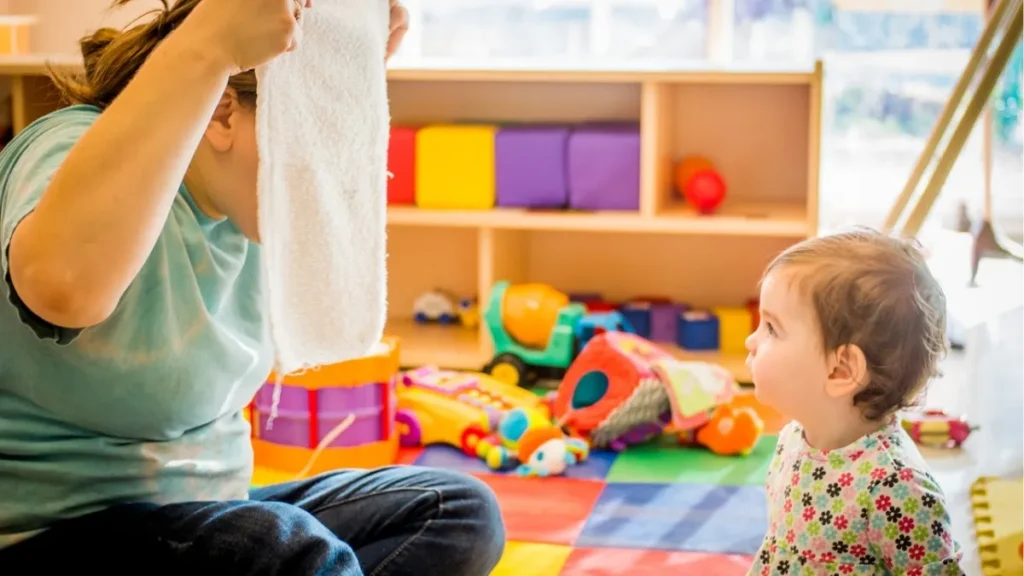
Age Group: 9 months – 1 year old
Materials: No materials needed!
How to Perform: Peek-a-boo is a timeless game that little ones love. Cover your face with your hands and say “peek-a-boo!” Then reveal your face and smile. This simple game strengthens social interaction and develops a sense of object permanence.
Area of Development: Social interaction, Object permanence
Activity 14: Ball Play

Age Group: 9 months – 1 year old
Materials: Soft ball
How to Perform: Find a soft, safe ball that your child can easily grasp. Roll the ball back and forth between you and your child, or gently bounce it in front of them. Encourage them to reach for and bat at the ball. This activity strengthens hand-eye coordination and gross motor skills.
Area of Development: Hand-eye coordination, Gross motor skills
Activity 15: Bath Time Play

Age Group: 6 months – 1 year old
Materials: Bath toys (floating, stacking)
How to Perform: Bath time can be a fun and stimulating experience for your little one. Provide them with bath toys that float, squirt water, or stack together. Let them explore the toys in the water, pouring, splashing, and squeezing. Bath time play promotes sensory development and fine motor skills.
Area of Development: Sensory development, Fine motor skills
Activity 16: Filling and Spilling

Age Group: 9 months – 1 year old
Materials: Container (cup, bowl), water (small amount)
How to Perform: Fill a cup or bowl with a small amount of water. Show your child how to tip the cup over and spill the water out. You can also provide them with a sponge (supervised use) for soaking up and squeezing out the water. This simple play is a great introduction to concepts like full and empty.
Area of Development: Science exploration, Basic concepts
Activity 17: Transferring with Spoons

Age Group: 1 year – 18 months
Materials: Two bowls or containers, cereal (Cheerios or similar), spoon
How to Perform: Fill one bowl with cereal or similar dry, safe objects. Provide your child with two bowls and a spoon. Show them how to scoop up the cereal with the spoon and transfer it to the empty bowl. This activity strengthens hand-eye coordination and fine motor skills, while also introducing them to the concept of transferring objects.
Area of Development: Hand-eye coordination, Fine motor skills
Activity 18: Cause and Effect Play (Lights)

Age Group: 1 year – 18 months Materials: Flashlight (safe for little hands)
How to Perform: If you have a flashlight with a safe, easy-to-use on/off switch, this can be a fun cause and effect activity. Show your child how to turn the flashlight on and off, lighting up different objects in the room. This simple play strengthens their understanding of cause and effect.
Area of Development: Cause and effect
Activity 19: Shape Sorting

Age Group: 1 year – 18 months
Materials: Shape sorter toy (large, chunky shapes)
How to Perform: Choose a shape sorter toy with large, chunky shapes that are easy for little hands to grasp. Demonstrate how to put the shapes through the corresponding holes. Let your child explore fitting the shapes in and out, or simply grasping and stacking the shapes on their own. Shape sorters encourage problem-solving skills and hand-eye coordination.
Area of Development: Problem-solving skills, Hand-eye coordination
Activity 20: Simple Sorting

Age Group: 1 year – 18 months
Materials: Basket, household objects (plastic spoons, socks)
How to Perform: Find two different household objects, like plastic spoons and socks. Place them in a basket all mixed together. Show your child how to separate the objects into two piles, one for spoons and one for socks. Even if they don’t perfectly sort them yet, this activity introduces the concept of sorting and categorization.
Area of Development: Sorting skills, Categorization

Conclusion: Cultivating a Love for Learning
By incorporating these activities into your daily routine, you’ll be fostering a love for learning that will benefit your child for years to come. Remember, focus on the process, not the product. Let your little one experiment, discover, and enjoy the journey.
Also Read:
- 20 Fun and Easy Activities for 2 Year Olds at Home
- 20 Fun and Easy Activities for 3 Year Olds at Home
- 20 Fun and Easy Activities for 4 Year Olds at Home
- 20 Fun and Easy Activities For 5 Year Olds at Home
- What is a Montessori Bed? – (Is it safe for toddlers?)